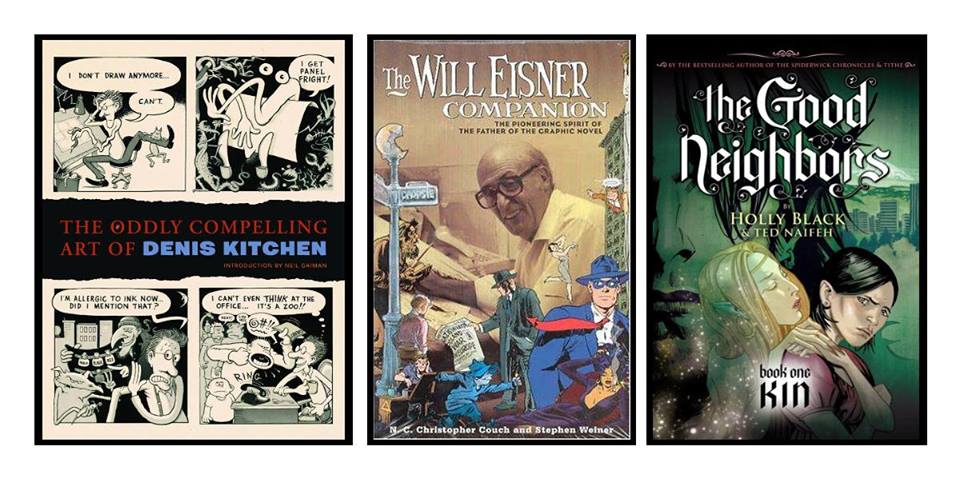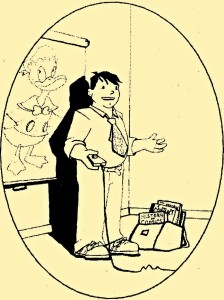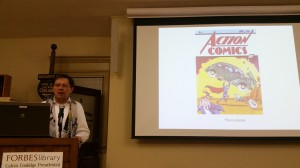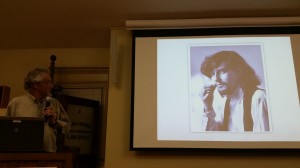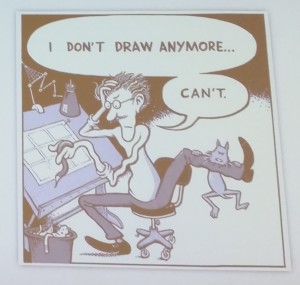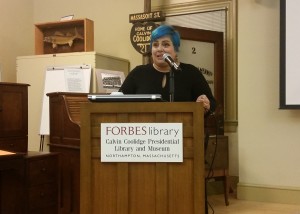On October 11, comics luminaries N.C. Christopher Couch, Denis Kitchen, and Holly Black came to the Forbes Library in a event I curated as writer in residence, to talk about comics and graphic novels – the act of creation, the importance of the medium, and each of their working styles. I found their comments illuminating, so I’ll share them here.
Chris Couch is a former editor at Kitchen Sink Press in Northampton and CP Manga in NYC, and a current scholar and teacher of graphic novels and comic books. He spoke about the place of comics in today’s literary universe.
Couch quipped that when the medium first entered the world of publishing, the comic book “wandered out into the world in its underwear.” With little formal backing, underground comic artists took to “living in garrets, panhandling on the streets of Berkely, whatever it took to become an artist.”
Despite this scrappy tradition, though, Couch said, the comic “has the DNA of short stories in it … but it’s its own artistic medium and deserves respect.” It has the same artistic richness as painting or sculpture, he said.
Today, comics and graphic novels are gaining a wider and wider readership. Young people in particular are reading comic books at a wicked clip. “People are going to read more comics because kids are reading them in school,” Couch said. Plus, he noted, “we’re really busy these days, and you can read a graphic novel faster than you can read a novel.”
Especially in the digital age, he said, comics offer unique pleasures. He noted that because online comics are often made very fast , creators “do awkward things.” Those little idiosyncracies, errors, and slapdash solutions form part of the enjoyment, giving readers a sense of being closer to the artist. “You’re really getting the raw thing when you read webcomics,” Couch noted. “There’s no editor between you and the work.”
“There are things you can do in comics that you can’t express in any other way,” Couch said.
Denis Kitchen is the founder of Kitchen Sink Press, which published graphic novels by luminaries like Will Eisner, Hurvey Kurtzman, Neil Gaiman, Alan Moore, Trinna Robbins, Scott McCloud annd many others. He’s been in the world of comics since helping originate the “Underground Comix” movement in the 1960’s.
Kitchen’s also a comic creator in his own right, and he shared several hilariously wry short comic sequences from his own work. Many of them riff on his discomfort with his life as an editor and owner of a press. “I was a card-carrying communist and socialist,” he said, “so I felt guilty being a businessman.”
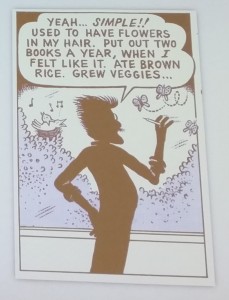
~
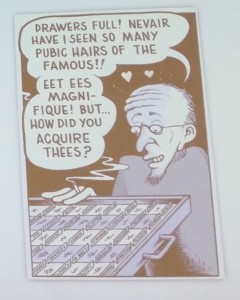
Finally, Holly Black, the best-selling fantasy author of The Spiderwick Chronicles, the Coldest Girl in Coldtown, the new The Cruel Prince, and a couple dozen other novels, spoke about her experience bringing her writing into the world of graphic novels with illustrator Ted Naifeh as collaborator in their series Kin.
She had tons of fascinating insights about how an author works best with an illustrator.
“In comics, pacing is often dictated by panel size,” she noted. “In a novel, you bury a clue. But in comics, that’s completely unfair.” Instead, a good clue should be placed somewhere in a full-page panel or other illustration that similarly indicates the importance of that moment in the plot.
“The constraints of comics to me are their real pleasure – the ability to write something like poetry,” she said.
“You have to give up certain kinds of control. You have to give up the right to set mood to the artist,” relying on illustration to create atmosphere, whereas in a book much of the atmospheric detail can come from written description. “As the writer, you’re the less important part of the collaboration.”
However, “there’s such a pleasure in working with that elegant line, the short line.”
Black said in her graphic novels, she likes to focus on “big visual moments and small character moments” that come together to form the world of the story. She mentioned receiving advice from Neil Gaiman, who told her to think of each single comic book as a full novel, and to tell it like that.
Bringing the evening back to Couch’s comparison to all great forms of art, she said that Gaiman advised her that, “the story at the front of the comic is not the real story of the comic.”
Instead, all three speakers agreed, comics, like all art, are vehicles for greater themes – friendship, anger, family, betrayal, death and love.
